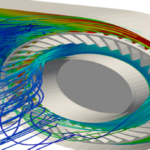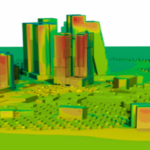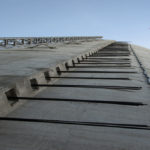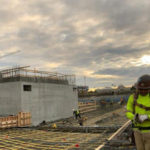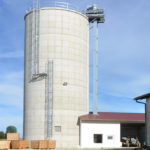Blog
What is Geotechnical Engineering?

The need for shelter has become one of the most important needs that must be met after human beings have settled down. Stone craftsmen and artisans who worked to meet this need in ancient times laid the foundations of CONSTRUCTION engineering, which is one of the main engineers today. Today, civil engineering is defined as the basic engineering field that deals with the plan, project and construction of buildings.
When structural engineering is mentioned, structural design comes to mind first. Structural design is a frequent study by civil engineers, but it would be a mistake to limit civil engineering to structural design only. The Department of Civil Engineering was formed by the merger of five different sub-disciplines: Hydraulic Sub-Division, Structure Sub-Division, Mechanical Sub-Division, Transportation Sub-Division and Geotechnical Sub-Division. In today’s article, we will examine Geotechnical Sub-Division which is one of the main sub-disciplines of construction.
What is Geotechnical?
Geotechnics is a department that started to be formed in the early 1900s, which includes basic construction sciences and soil mechanics and is important for solving civil engineering problems with the advancement of technology. Geotechnics is a department; works on the construction of each structure to be built by resting on the floor ergonomically and safely. The individuals who work in the field of geotechnics are called geotechnical engineers. There are misunderstandings about geotechnical engineering. One of these mistakes is that geotechnical engineering belongs to Geological and Geophysical Engineering. However, geotechnical engineering is the main sub-branch of civil engineering.
In other words, geotechnical engineering is an engineering sub-branch that deals with the interactions between the soil or rock environment in which the buildings are located or located. In this period when the earthquake was on our agenda, the importance of geotechnical studies increased. Although geotechnical engineers cannot use precise expressions due to the uncertainty of the subject they are dealing with, it provides the most reasonable solution with approximate solutions and the use of certain safety coefficients.
From a broad perspective, it is seen that geotechnical studies consist of three main elements. The elements mentioned; Soil Mechanics, Foundation Construction and Soil Dynamics. In order to better understand the geotechnical studies, it is necessary to define these concepts briefly;
Soil Mechanics: Engineering properties and behavior of soil analysis.
Foundation Construction: Development of engineering designs in order to solve application problems.
Soil Dynamics: Investigation of engineering properties and behavior of soils under dynamic loads.
Latest Blog
-
Why Are Reinforced Concrete Static Projects Important?
27 March 2025 -
Why Are Steel Static Projects Important?
21 March 2025 -
What is Acoustic CFD Analysis?
4 March 2025 -
Fire Analysis with CFD: Fire Safety and Simulation Technologies
25 February 2025 -
What Is A Static Project And Why Is It Important?
19 February 2025 -
Silo Static Project
29 July 2024 -
Methods Used In Earthquake Performance Analysis
4 July 2024 -
Reinforced Concrete Calculation Static Report
31 January 2024 -
Steel Calculation Static Report
31 January 2024 -
What Is CFD Analysis?
22 December 2023 -
What Are The Benefits Of CFD Analysis?
22 December 2023 -
Silo Reinforcement with Post-Tensioning Method
26 September 2023 -
Post Tensioning Method in Cantilever Slabs
4 September 2023 -
Post-Tensioning Application In Reinforced Concrete Silos
22 August 2023












